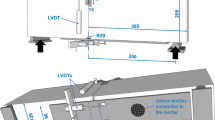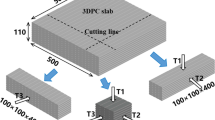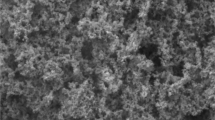Abstract
The pore structure and low-temperature dilatation behavior of traditional hydrated Portland cement paste compacted by different methods were investigated. The aim of the investigation was to demonstrate the influence of the water-cement ratio and the compacting conditions on the developing pore structure and the frost dilatation during the early stage of the hydration process. A low water-cement ratio and a high compacting pressure resulted in initially low porosity, but in coarser pore sizes. Vibration resulted in lower pore volumes as compared with those of cast cement pastes, but the pore size distributions were similar. In accordance with the pore size distribution, two frost dilatation effects were measured when macro- and mesopores also occurred in the hydrated cement pastes. In the samples compacted by high pressure, a single frost dilatation effect occurred in connection with the macropores present in the sample. The magnitude of the frost dilatation effect decreased with increasing curing time. The decrease is caused by a decrease in the volume of the pores and also by an increase in matrix strength.
Zusammenfassung
Es wurde die Porenstruktur und das Tieftemperaturdilatationsverhalten von herkömmlichem, hydratiertem, durch verschiedene Methoden verdichtetem Portland-Zementleim untersucht. Das Ziel der Untersuchung bestand im Nachweis des Einflusses des Wasser-Zement-Verhältnisses und der Verdichtungsbedingungen auf die entstehende Porenstruktur und die Frostdilatation in der frühen Periode des Hydratationsprozesses. Ein niedriges Wasser-Zement-Verhältnis und ein hoher Verdichtungsdruck liefert eine geringe Porösität, aber größere Porenmaße. Vibration liefert im Vergleich zu gegossenem Zementleim ein geringeres Porenvolumen, aber die Beiträge zur Porengröße waren ähnlich. In Übereinstimmung mit dem Porengrößeeinfluß wurden zwei Frostdilatationseffekte gemessen, wenn sowohl Makroals auch Mesoporen in den hydratierten Zementleimen vorkamen. In denjenigen Proben, die unter Hochdruck verdichtet wurden, tritt in Verbindung mit der Gegenwart von Makroporen in der Probe ein einfacher Frostdilatationseffekt auf. Die Höhe des Frostdilatationseffektes sinkt mit steigender Aushärtungszeit. Dieses Sinken wird durch eine Abnahme des Volumens der Poren verursacht und ebenfalls durch ein Ansteigen der Matrixfestigkeit.
Similar content being viewed by others
References
Zs. E. Wagner, J. Thermal. Anal., 37 (1991) 1053.
P. Parcevaux, Cement Concr. Res., 14 (1984) 419.
H. W. Domer and M. Setzer, Cement Concr. Res., 10 (1980) 403.
Author information
Authors and Affiliations
Rights and permissions
About this article
Cite this article
Wagner, Z.E. Correlation between pore structure and low-temperature dilatation of hydrated cement pastes and mortars. Journal of Thermal Analysis 37, 2267–2275 (1991). https://doi.org/10.1007/BF01913726
Received:
Issue Date:
DOI: https://doi.org/10.1007/BF01913726




